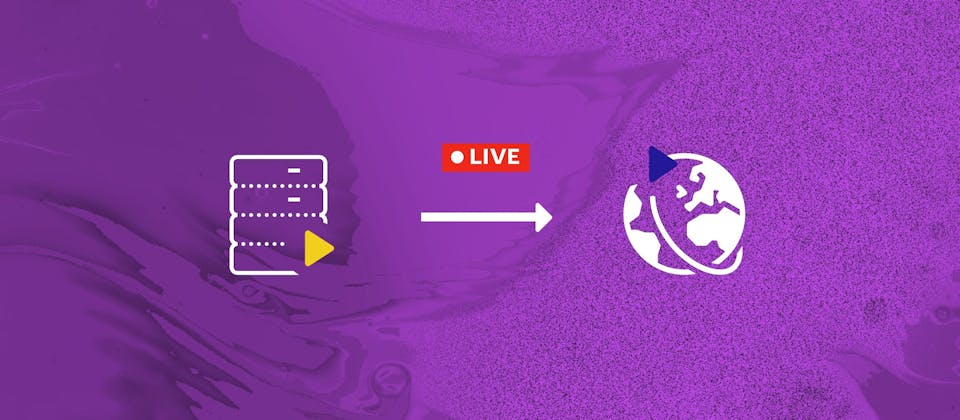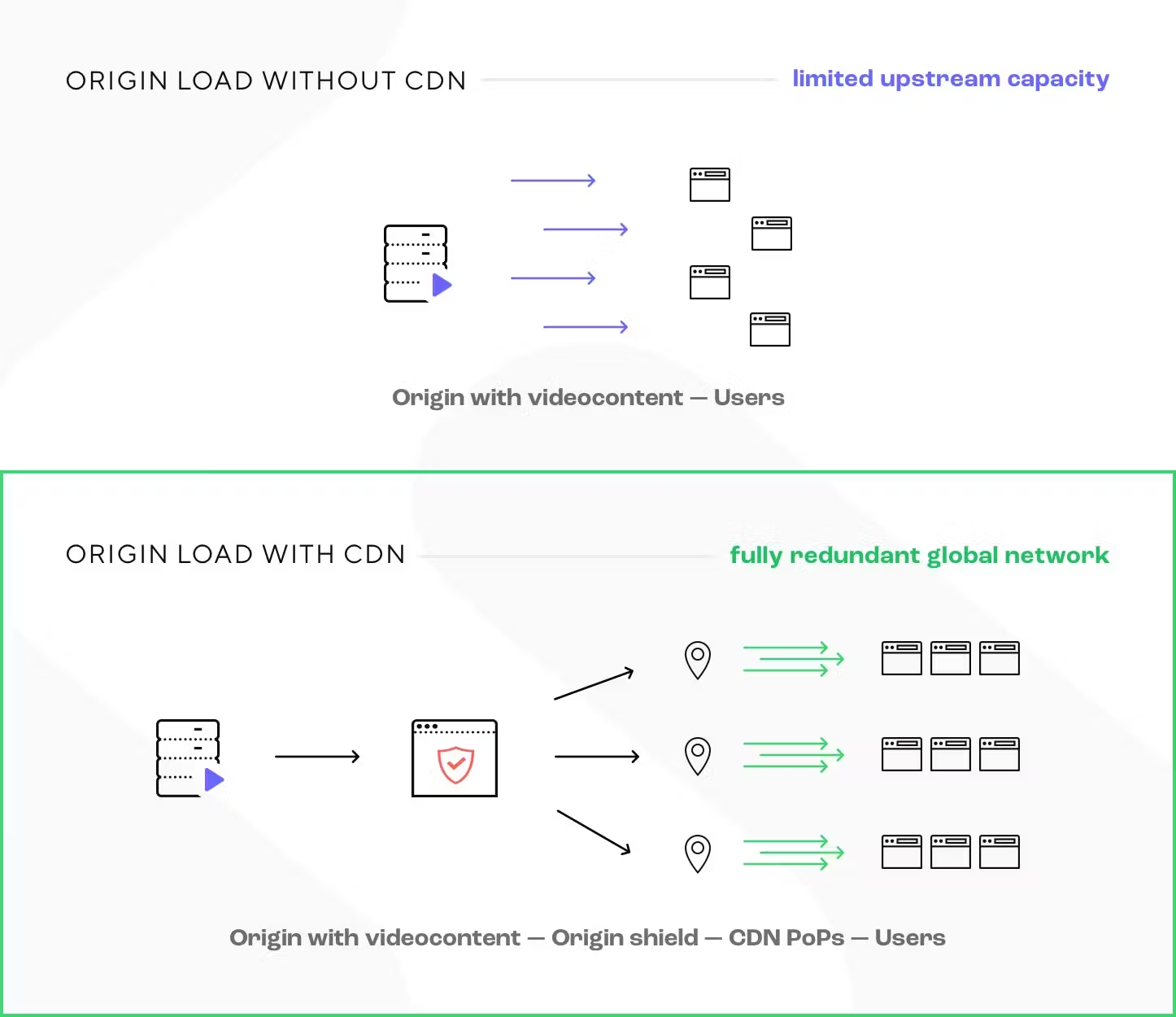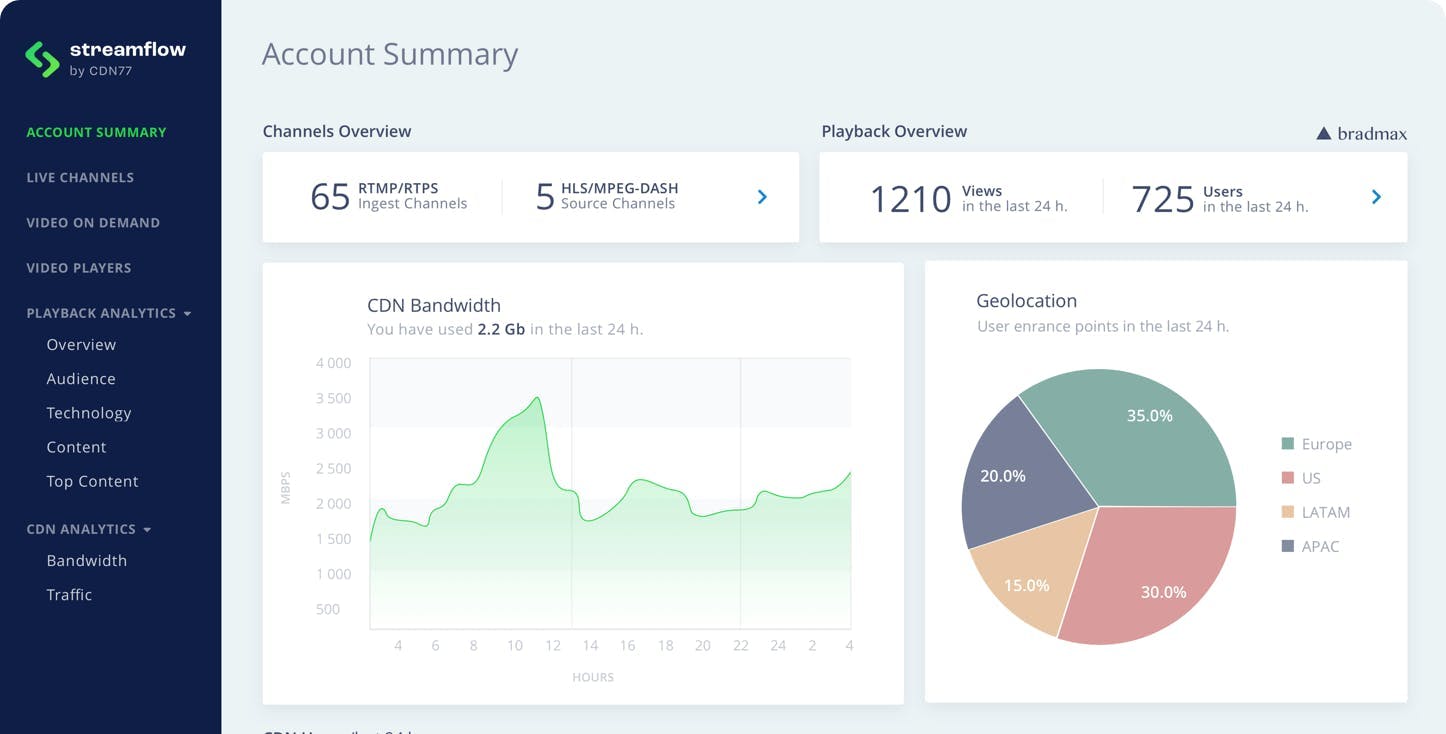5 Benefits of CDN in Live Streaming

The emergence and the fast growth of live streaming industry in the past few years is a clear sign of the growing importance and demand for fast, reliable, and smooth user experience for the viewers. Be it live, linear or OTT broadcast, a single streaming server often does not satisfy the performance needs especially when it comes to reaching a global audience. This article provides an overview of 5 main benefits of deploying CDN for streaming and explains the essence of the optimal network setup.
1. Latency
Among all the advantages of CDN, cutting down the network latency is the best known performance benefit. The fundament of CDN lies in strategic positioning of the servers (PoPs) closer to the end users and thus reducing the propagation time of all the data packets.
Put in a simple way, when the first viewer starts watching a stream, CDN pulls the segmented stream data from the origin server and caches it in our PoPs. Once cached, the media files remain available for other viewers. This means that all other viewers are served the video files from the closest PoP rather than from the origin, which translates into a faster and consequently smoother video distribution.
In terms of live streaming, however, the simple definition of latency often hides a complex streaming workflow behind. While the CDN part inarguably helps accelerating the stream delivery on the path PoPs - end users, the aggregate of all the units creating the entire streaming workflow in fact contributes to the gap widening between the capture and playback. This is why it's important to keep in mind that the network latency is just one of many aspects of the complete live streaming latency, or as it is often called, glass-to-glass latency. To learn more about live streaming latency and how we've found a way to cut it down effectively, refer to our blog on HLS & MPEG-DASH Protocols Latency.
2. Scalability & Redundancy
Buffering blunders often come as maddening for viewers and can easily make them go elsewhere. That's why scalability and redundancy during the high-load conditions are two business-critical considerations for all the projects in the streaming industry operating with a global audience.
By distributing the content across a high number of servers for video delivery, the result is not only a larger network backbone capacity, but very importantly, a significant offload of the origin server. Chunks packed within manifests are served to the end users in a substantial portion from the PoP's cache instead of pulling them directly from the origin for each unique stream at once. Furthermore, by setting up a cache bypass on your stream, we make sure to cache the manifests for a second only. This converts into even more effective origin offload while providing the most up-to-date manifest available.
CDN77's 50Tbps+ fully redundant network is designed to absorb all unexpected peaks and allows you to scale up and reach audiences of thousands or millions of concurrent viewers no matter where in the world they are.

3. Smooth performance
The video in live streaming doesn’t travel through the same set of tubes to every viewer at once. Every single viewer watching streaming video has a uniquely dedicated single stream that flies through one of the countless networks and needs to be delivered consistently to avoid poor video quality. All the variables involved cause that buffering still persists and thus remains a troubling reality for many content providers.
By adding a CDN segment into the streaming sequence, CDN allows for an additional playback buffer of the video chunks (i.e. chunks that 'queue' in the buffer until the previous chunks are played). Armed with the buffer at altogether 3 locations, namely on the side of the streaming server, CDN and the player, we maintain an uncompromised quality and uninterrupted video experience of the viewers.
4. Security
An indispensable advantage of streaming through CDN is that it comes along with all the extra security measures available on the CDN layer. When it comes to protecting the video content from unwanted attention, there are several access management and content protection features that Video CDN offers for free, e.g. Secure Tokens, built-in DRM, origin protection, hotlink protection or IP & geo whitelisting/blacklisting.
Our PoPs furthermore support the TLS 1.3 protocol to ensure the best security, capability, and performance guarantees. CDN77's fully scalable global network with DDoS mitigation technologies built in the network enable to instantly identify and mitigate any malicious activity, thus keeping the video content safe and accessible to legitimate users even during the attack.
5. Savings
Last but not least, using CDN service brings major cost savings. Keeping your own infrastructure to handle potential peaks is expensive and often beyond the scope of the business. Letting a CDN provider handle your video assets not only comes at significantly lower expenses and more predictable costs, but it also streamlines the entire broadcasting process.
Building upon our own CDN infrastructure, we provide you with a full control of your CDN performance and gives you a detailed analytics overview thanks to a single Dashboard that integrates both CDN and Live Streaming management. This way you have a clear picture of what's happening at each stage of the streaming pipeline.

If you’d like to learn more about Video CDN, do not hesitate to get in touch with us to get your free trial.

Global Sales & Account Management